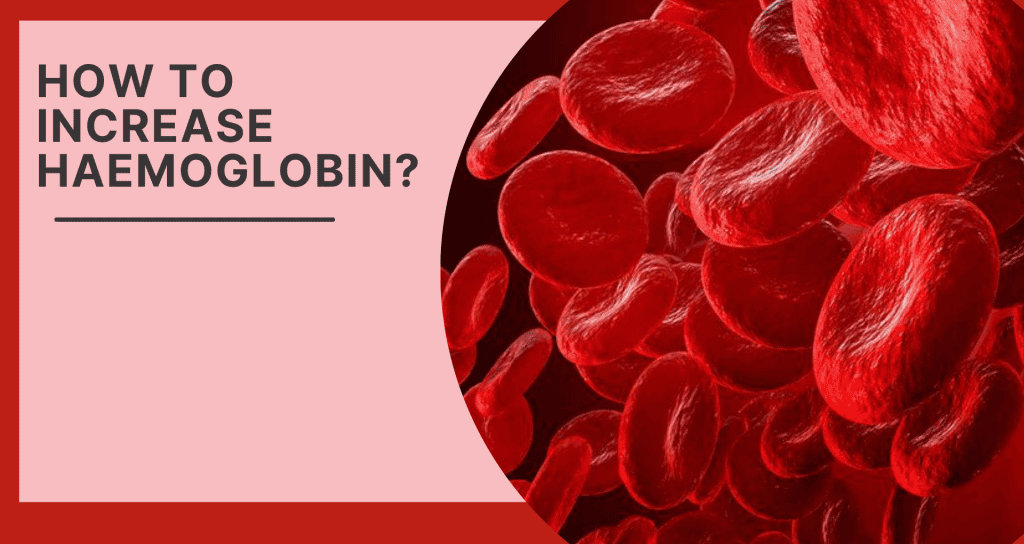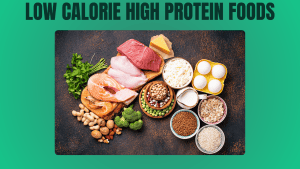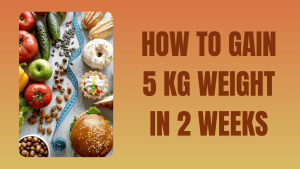Elevating haemoglobin elegantly involves a mindful dietary approach. Embrace iron-rich fare such as lean meats, legumes, and leafy greens while harmonizing with vitamin C-rich foods like citrus fruits for optimal absorption. Enrich your plate with folic acid and vitamin B12 sources such as eggs and fortified cereals. Steer clear of iron-inhibiting substances like tea or coffee. Supplements, if advised by a healthcare professional, can complement this endeavour. Address underlying health concerns contributing to low levels of holistic enhancement. Regular consultation and personalized adjustments ensure a sophisticated path toward elevated haemoglobin levels.
Is it possible to increase Hemoglobin?
Yes, it’s possible to increase haemoglobin levels through dietary adjustments, supplementation, and addressing underlying health issues. A balanced diet rich in iron, including red meat, legumes, and leafy greens, alongside vitamin C sources for enhanced absorption, can elevate haemoglobin. Additionally, incorporating foods abundant in folic acid and vitamin B12, like eggs and fortified cereals, aids in this endeavour. Avoiding iron-inhibiting substances such as coffee or tea is also beneficial. Supplements, if recommended by healthcare professionals, can complement these efforts. Addressing underlying health conditions contributing to low haemoglobin, like gastrointestinal disorders or chronic diseases, is crucial for sustained improvement. Regular consultations and tailored adjustments based on individual needs ensure a systematic and practical approach towards increasing haemoglobin levels. However, it’s essential to consult healthcare providers for personalized guidance and monitoring throughout this process.
How to Increase Hemoglobin Quickly?
To know how to raise haemoglobin quickly, your prime focus should be a nutrient-rich diet. Consume iron-rich foods like lean meats, legumes, dark leafy greens, and fortified cereals. Pair these with vitamin C sources, such as citrus fruits and bell peppers, to enhance iron absorption. Include foods high in folate and vitamin B12, like leafy greens and animal products. Avoid tea and coffee during meals, as they can hinder iron absorption. Cooking with cast-iron cookware and consuming pomegranate juice and beetroot can further boost iron intake. Nuts, seeds, and blackstrap molasses are also beneficial. Here are some recommendations for raising hemoglobin naturally:
- Increase Iron Intake
- Increase Folic Acid Intake
- Maximize Iron Adoption
- Eat more Vitamin C
- Eat Dark Chocolate
- Avoid excessive exercise
- Iron Supplements
- Cooking in Iron Utensils
- Limit Alcohol
- Herbal Remedies
1. Increase Iron Intake
Iron is a critical component of the body. Its primary role is storing and transporting iron throughout the body. In an iron-deficient state, haemoglobin cannot be synthesized, with resultant microcytic anaemia due to the formation of small erythrocytes. Increase your intake of iron naturally by consuming foods high in iron, such as fortified cereals, lean meats (particularly red meats like beef and lamb), chicken, fish, beans, lentils, and tofu. These are some of the ways on how to increase hemoglobin quickly.Include kale and other dark leafy greens in your diet. Use cast-iron cookware to boost the amount of iron in your food while you prepare it.
2. Increase Folic Acid Intake
Folate is a collection of water-soluble compounds that are crucial for the biosynthesis of deoxyribonucleic acid (DNA). The term is often used interchangeably with vitamin B9. Folic acid converts into tetrahydrofolic acid (THF). THF is involved in several transfer/methylation reactions that are essential for synthesizing nitrogenous bases in both DNA and ribonucleic acid (RNA). Additionally, these reactions are crucial for the maturation of red blood cells (RBCs). This is how to raise haemoglobin content naturally in the body.If your doctor advises it, think about taking folic acid pills.
3. Maximize Iron Absorption
To maximize iron absorption, consider these strategies.
- Consume iron-rich foods alongside vitamin C sources (like citrus fruits) to enhance absorption.
- Avoid drinking tea and coffee with meals, which can inhibit iron uptake.
- Cooking with cast-iron cookware can increase iron content in your food.
- Include foods rich in heme iron (found in animal products) and non-heme iron (in plant-based sources) for a balanced intake.
- Vitamin A and beta-carotene-rich foods (e.g., carrots) promote iron absorption.
- On the other hand, calcium and excessive dietary fibre might inhibit iron absorption, so avoid overconsumption if you’re focusing on maximizing iron uptake
4. Eat more Vitamin C
Ascorbic acid is a potent enhancer of nonheme iron absorption, capable of reversing the inhibitory effects of substances such as tea and calcium/phosphate. This is achieved by forming a chelate with ferric iron at an acid pH, which remains soluble in the alkaline environment of the duodenum.Including vitamin C-rich foods in one’s diet is a recommended method for increasing haemoglobin levels, as it aids in the absorption of iron in the body. Although vitamin C supplements can also be taken if necessary, it is generally recommended that nutrients are obtained from whole foods. Get a more detailed knowledge on the vitamin c foods.
5. Eat Dark Chocolate
This is one of the ways to increase hemoglobin naturally, and you will know how to increase hemoglobin. Dark chocolate contains iron and can be an enjoyable way to increase your iron intake. Look for dark chocolate with a high cocoa content for the best results.
6. Avoid excessive exercise
Overtraining can have adverse effects on your body, including haemoglobin content. Here’s why it’s essential to avoid overtraining when aiming to improve haemoglobin levels:
- Hemolysis: Excessive and intense physical activity can lead to hemolysis, the destruction of red blood cells. This can lower haemoglobin levels.
- Inflammation: Overtraining can cause chronic inflammation, negatively impacting the production of new red blood cells and haemoglobin.
- Nutrient Depletion: Overtraining may result in nutrient deficiencies, such as iron and folate, essential for haemoglobin production.
- Weakened Immune System: Overtraining weakens the immune system, making you more susceptible to infections and illnesses, indirectly affecting haemoglobin levels.
7. Iron Supplements
Iron supplements augment haemoglobin production by providing a concentrated dose of iron, a crucial component in red blood cell synthesis. When dietary intake is insufficient or when there’s a rapid need for increased iron, supplements offer a quick and direct source. These supplements assist in replenishing iron stores in the body, allowing the bone marrow to produce more red blood cells and thus helping us in the process of how to raise haemoglobin levels. However, proper dosage and guidance from healthcare professionals are vital to prevent iron overload or adverse effects, ensuring safe and effective improvement in haemoglobin levels.
8. Limiting alcohol
Limiting alcohol aids in increasing haemoglobin by enhancing iron absorption and supporting bone marrow function. Excessive alcohol intake impedes nutrient absorption, including iron, crucial for haemoglobin production. By reducing alcohol consumption, the body optimizes its ability to absorb iron from the diet. Moreover, it helps maintain a healthier gastrointestinal tract, preventing issues that could hinder nutrient absorption and contribute to anaemia. This change allows the body to utilize iron more effectively, supporting the production of red blood cells, thus positively impacting haemoglobin levels.
9. Cooking in iron utensils
Cooking with iron utensils can increase haemoglobin levels due to the transfer of iron into the food during cooking. Iron from the utensils leaches into the food, especially when cooking acidic or liquid-based dishes. This small amount of iron from the utensils can be absorbed by the body and contribute to overall iron intake. While it might not lead to a significant increase in haemoglobin levels alone, incorporating this practice and an iron-rich diet can provide a minor but beneficial boost in iron intake, supporting the body’s efforts to maintain healthy haemoglobin levels.
10. Herbal Remedies
Herbal remedies aid in restoring haemoglobin levels by supplying essential nutrients like iron, folate, and vitamin B12, crucial for red blood cell production. Herbs like nettle, dandelion, and yellow dock contain iron, fostering haemoglobin synthesis. Additionally, alfalfa and spirulina provide chlorophyll, supporting blood oxygenation. Herbs rich in vitamin C, such as amla and rose hips, enhance iron absorption. Moreover, adaptogenic herbs like ashwagandha and liquorice help combat stress-induced anaemia. These natural remedies act synergistically, boosting haemoglobin levels and supporting overall blood health without the potential side effects of synthetic supplements. However, consult a healthcare professional before using herbal treatments for anaemia.
To increase haemoglobin safely, maintain a balanced exercise regimen, prioritize adequate rest and recovery, and ensure a well-rounded diet rich in iron and other essential nutrients. Consult a healthcare professional or a fitness expert for personalized guidance. These are some of the various ways on how to increase hemoglobin quickly.
How to Increase Hemoglobin in a week?
So how to increase hemoglobin in a week? It can be difficult to increase hemoglobin levels in just one week because it usually takes longer to notice noticeable changes in your blood hemoglobin levels. You can, however, take measures to encourage and enhance your body’s capacity to generate and sustain appropriate hemoglobin levels over time. You can follow the instructions listed below. But for accurate diagnosis and treatment, if you have a medical problem or are suffering from severe anemia, you must speak with a healthcare provider.
Step 1- Consult a physician
The first thing to do if you think you might have low hemoglobin levels or anemia is to speak with a healthcare provider. Your low hemoglobin’s cause can be determined, and they can offer personalized advice and care. There is also a blood test called the hemoglobin HBA1C test also known as the glycated hemoglobin test or just the A1c test, which is used to determine the average blood sugar (glucose) levels over two to three months. This test is frequently used to identify and track diabetes mellitus, especially type 2, as well as to judge how effectively a diabetic individual is controlling their blood sugar levels. This is the primary regimen that you need to follow if you want to know how to raise haemoglobin levels in the body.
Step 2- Dietary Adjustments
How to increase hemoglobin in a week? There are foods to increase hemoglobin so consume iron-rich foods including spinach, beans, lentils, lean meats, poultry, fish, poultry, eggs, fortified cereals, and soy products. Include foods high in vitamin C in your diet, such as citrus fruits, strawberries, and bell peppers, as this vitamin helps the body absorb iron. For this you can follow a balanced diet chart.
Step 3- Supplements
You might need to take iron supplements if your doctor advises it. Be sure to adhere to your doctor’s directions.
Step 4- Stay Hydrated
If you want to know how to increase hemoglobin in a week, focus on water consumption. Water consumption is crucial for overall health, including the creation of blood. The concentration of your blood might be impacted by dehydration.
Foods to Increase Hemoglobin
We have told you about how to increase hemoglobin now which are the foods to increase hemoglobin? For people with low hemoglobin levels, such as those with iron-deficiency anemia, raising hemoglobin levels in the blood can be significant. The following details how each of the foods described above can support raising hemoglobin levels-
1. Pomegranate
This is one of the foods to increase hemoglobin.Pomegranates are well-known for their significant content of vitamin C and other antioxidants. Scientific evidence has documented the role of vitamin C in enhancing the absorption of non-heme iron, commonly found in plant-based foods and supplements. Vitamin C aids in converting non-heme iron into a more soluble and absorbable form in the small intestine, facilitating the body’s ability to absorb iron from the diet. Consequently, consuming pomegranates or pomegranate juice with iron-rich foods may help improve iron absorption and increase iron content in the body.
2. Dates
Dates are one of the foods to increase hemoglobin in your diet as they are rich in iron, which is a crucial component of haemoglobin and helps in transporting oxygen in the blood. Dates are also a good source of essential nutrients like folate and vitamin B6, which are necessary for red blood cell production. Dates also contain a considerable amount of Vitamin A and hence it is a Vitamin A foods.
Since dates contain natural sugars, they are an ideal energy source for those experiencing anaemia-related fatigue. Moreover, the high fibre content in dates helps in digestion and nutrient absorption. By consuming a few dates daily, you can improve your haemoglobin levels over time, especially when combined with other iron-rich and nutrient-dense foods in your balanced diet.
3. Beetroot
Beetroots have been identified as a significant natural remedy to increase haemoglobin levels in the human body. The root vegetable is rich in iron, critical in haemoglobin production and provides a readily absorbable mineral form. Furthermore, beetroots are an excellent source of folate and vitamin C, both essential for red blood cell formation and iron absorption. Apart from haemoglobin beetroots ae excellent Vitamin E foods which are responsible to bring bridal glow to your face.
In addition, the vegetable contains betacyanin, a compound that stimulates the production of red blood cells. Incorporating beetroots into a balanced diet, whether raw, cooked, or in juice form, can be an effective way to raise haemoglobin levels naturally and maintain overall blood health. This is one of the foods to increase hemoglobin.
4. Legumes
This is one of the foods to increase hemoglobin. Legumes are great providers of plant-based iron, which can help people, especially those eating vegetarian or vegan diets, have higher hemoglobin levels. They also include protein, and are an excellent source of Vitamin D foods which are necessary for good health. Consuming such foods is one way in the process of how to increase hemoglobin quickly .
5. Watermelon
Although watermelon is not a substantial source of iron, its high vitamin C content may help to indirectly improve hemoglobin levels.Intake of iron from other foods, such as iron-rich vegetables or grains, is improved by vitamin C. This is one of the foods to increase hemoglobin. Consuming such foods is one way to know how to increase hemoglobin naturally.
6. Pumpkin Seeds
This is one of the foods to increase hemoglobin. A good source of magnesium, zinc, and iron can be found in pumpkin seeds. Magnesium and zinc are crucial for the general health of the blood and immune system, while iron from pumpkin seeds can help in the synthesis of hemoglobin. Consuming such foods is one way to know how to increase hemoglobin naturally.
Natural Hemoglobin count for Men and Women
The normal range for adult males’ hemoglobin levels varies significantly depending on the lab and the area, but generally. it lies between 13.8 and 17.2 grams per deciliter (g/dL) of blood. Age, general health, and individual variances can all have an impact on this range.
Hemoglobin levels in adult females typically vary from 12.0 to 15.5 grams per deciliter (g/dL) of blood. It’s important to remember that these numbers can vary significantly between laboratories and healthcare providers, so it’s advisable to talk to a healthcare expert about your hemoglobin levels and any worries.It’s crucial to remember that dietary choices, genetics, physical conditions, and altitude can all cause changes in hemoglobin levels. The best course of action is to speak with a healthcare professional for a comprehensive evaluation and pertinent advice if you have any worries about your hemoglobin levels or any associated health conditions.
What are the reasons for Low Hemoglobin Count?
Several factors can contribute to a low haemoglobin count, leading to a condition known as anaemia. Some common causes include:
- Iron Deficiency
- Vitamin Deficiencies
- Chronic Diseases
- Bone Marrow Problems
- Blood Loss
- Genetic Conditions
- Pregnancy
1.Iron deficiency
Iron is a fundamental component of haemoglobin production. Inadequate iron intake or absorption limits the body’s ability to synthesize haemoglobin, which is crucial for red blood cells to transport oxygen. When there’s insufficient iron, the bone marrow produces fewer red blood cells, decreasing haemoglobin count. Iron deficiency disrupts the haemoglobin assembly process, hindering the blood’s capacity to carry oxygen efficiently. Addressing iron deficiency through dietary changes, supplements, or medical intervention helps replenish iron stores, enabling the body to produce adequate haemoglobin and combat anaemia.
2. Vitamin Deficiency
Vitamin deficiencies, particularly folate (B9), vitamin B12, and vitamin C, crucially impact red blood cell production and haemoglobin synthesis. Folate and B12 are essential for DNA synthesis in red blood cell precursors, and their scarcity leads to abnormal cell division and larger, immature red blood cells (megaloblastic anaemia). Vitamin C enhances iron absorption, which is vital for haemoglobin production. Insufficient levels of these vitamins disrupt the synthesis and maturation of red blood cells, causing a decrease in haemoglobin levels and impairing the blood’s ability to transport oxygen efficiently, ultimately resulting in anaemia.
3. Chronic Diseases
Chronic diseases like chronic kidney disease, cancer, diabetes, and autoimmune disorders impact haemoglobin levels through various mechanisms. Kidney disease reduces erythropoietin production, a hormone crucial for red blood cell production, leading to anaemia. Cancer and its treatments can suppress bone marrow function, hindering red blood cell production. Diabetes may cause kidney damage or affect nutrient absorption, impacting haemoglobin synthesis. Autoimmune disorders can lead to inflammation that interferes with red blood cell lifespan and production. These chronic conditions disrupt the body’s ability to maintain adequate haemoglobin levels, resulting in anaemia and impaired oxygen transport in the blood.
4. Bone Marrow Problems
Bone marrow problems such as aplastic anaemia, myelodysplastic syndromes, and leukaemia hinder average red blood cell production. These conditions affect the bone marrow’s ability to generate healthy red blood cell precursors. In aplastic anaemia, the bone marrow fails to produce enough red blood cells due to damaged stem cells. Myelodysplastic syndromes lead to abnormal cell development and insufficient mature red blood cells. Leukaemia causes an overproduction of abnormal white blood cells, crowding out red blood cell production. These bone marrow disorders disrupt the balance of blood cell production, leading to decreased haemoglobin levels and anaemia.
5. Blood Loss
Blood loss, whether acute or chronic, reduces the body’s red blood cell count, impacting haemoglobin levels. Acute bleeding from injuries, surgeries, or trauma rapidly decreases red blood cells, leading to an immediate drop in haemoglobin. Chronic blood loss from ulcers, gastrointestinal conditions, or heavy menstruation gradually depletes red blood cells and haemoglobin. Loss of red blood cells surpasses the body’s capacity to replace them, resulting in diminished haemoglobin levels and impaired oxygen-carrying capacity in the blood, leading to anaemia and its associated symptoms.
6. Genetic Conditions
Genetic conditions like sickle cell anaemia, thalassemia, and hereditary spherocytosis impact haemoglobin production or structure. Sickle cell anaemia causes abnormal haemoglobin, leading to misshapen red blood cells that quickly break down, reducing their numbers and haemoglobin levels. Thalassemia results in reduced haemoglobin production, showing fewer healthy red blood cells. Hereditary spherocytosis affects red blood cell structure, shortening its lifespan and causing a decrease in haemoglobin. These genetic conditions disrupt normal red blood cell function and production, resulting in diminished haemoglobin levels, inadequate oxygen transport, and potential anaemia.
7. Pregnancy
During pregnancy, a woman’s blood volume expands to support the developing fetus, diluting the concentration of red blood cells and haemoglobin. Additionally, the demand for iron and other nutrients increases significantly to sustain the mother and the growing baby. If dietary intake or supplementation of iron and essential vitamins isn’t sufficient to meet these elevated demands, it can lead to decreased haemoglobin levels. This condition, known as pregnancy-related anaemia, results in reduced oxygen-carrying capacity in the blood, potentially affecting the health of both the mother and the baby if not adequately managed.
Expert Review on How to Increase Hemoglobin
We have looked at various aspects of how to increase hemoglobin quickly. We have also looked at foods to increase hemoglobin and we have seen that for people with low hemoglobin (anemia) or those trying to maintain a healthy level, increasing hemoglobin levels is crucial. Dietary Adjustments need to be done such as including items high in iron in your diet, like lean meats, beans, lentils, leafy greens, and fortified cereals. Citrus fruits and other foods high in vitamin C can improve iron absorption. You can also consider taking iron supplements as directed by a healthcare practitioner if dietary adjustments are insufficient. Supplemental folate and vitamin B12 may also be required for some kinds of anemia.
References
“Iron Supplementation – StatPearls.” 2023. NCBI. https://www.ncbi.nlm.nih.gov/books/NBK557376/.
“Folic Acid – StatPearls.” 2023. NCBI. https://www.ncbi.nlm.nih.gov/books/NBK554487/.
FAQs
How can I increase hemoglobin fast?
To know how to raise haemoglobin quickly, consume iron-rich foods like red meat, poultry, beans, and fortified cereals. Pair them with vitamin C sources for better absorption. Consider iron supplements if advised by a healthcare professional. Ensure adequate rest, hydration, and regular exercise. Consult a doctor for personalized advice on improving haemoglobin rapidly.
Which foods are the best to increase hemoglobin?
The best foods to increase haemoglobin include iron-rich options like lean meats, poultry, fish, beans, lentils, and fortified cereals. Leafy greens, beets, and dried fruits are excellent choices. Pair them with vitamin C sources, such as citrus fruits, to enhance iron absorption. Additionally, consume foods rich in folate and vitamin B12 for optimal red blood cell production.
Which drink increases hemoglobin?
Beetroot juice increases haemoglobin levels due to its high iron content and folate. It also contains antioxidants and nitrates that aid in improving blood flow and oxygenation. Consuming beetroot juice regularly can help boost haemoglobin levels in the body.
How can i increase my hemoglobin at Home?
Increase hemoglobin at home by consuming iron-rich foods like spinach, lentils, red meat, and fortified cereals. Include vitamin C sources to aid iron absorption. Eat folate-rich foods like beans and citrus fruits. Additionally, consider beetroot, pomegranate, and molasses for their hemoglobin-boosting properties









